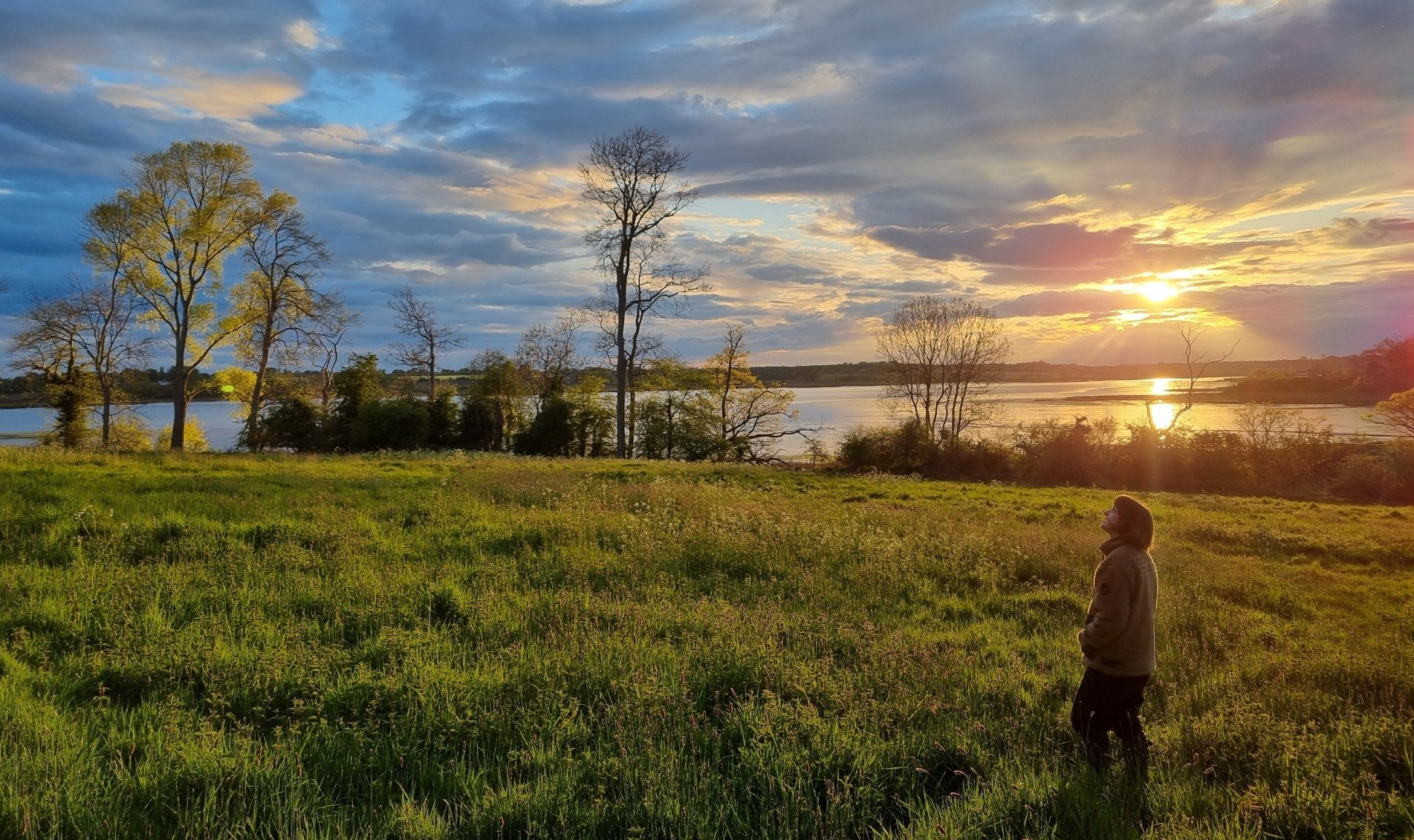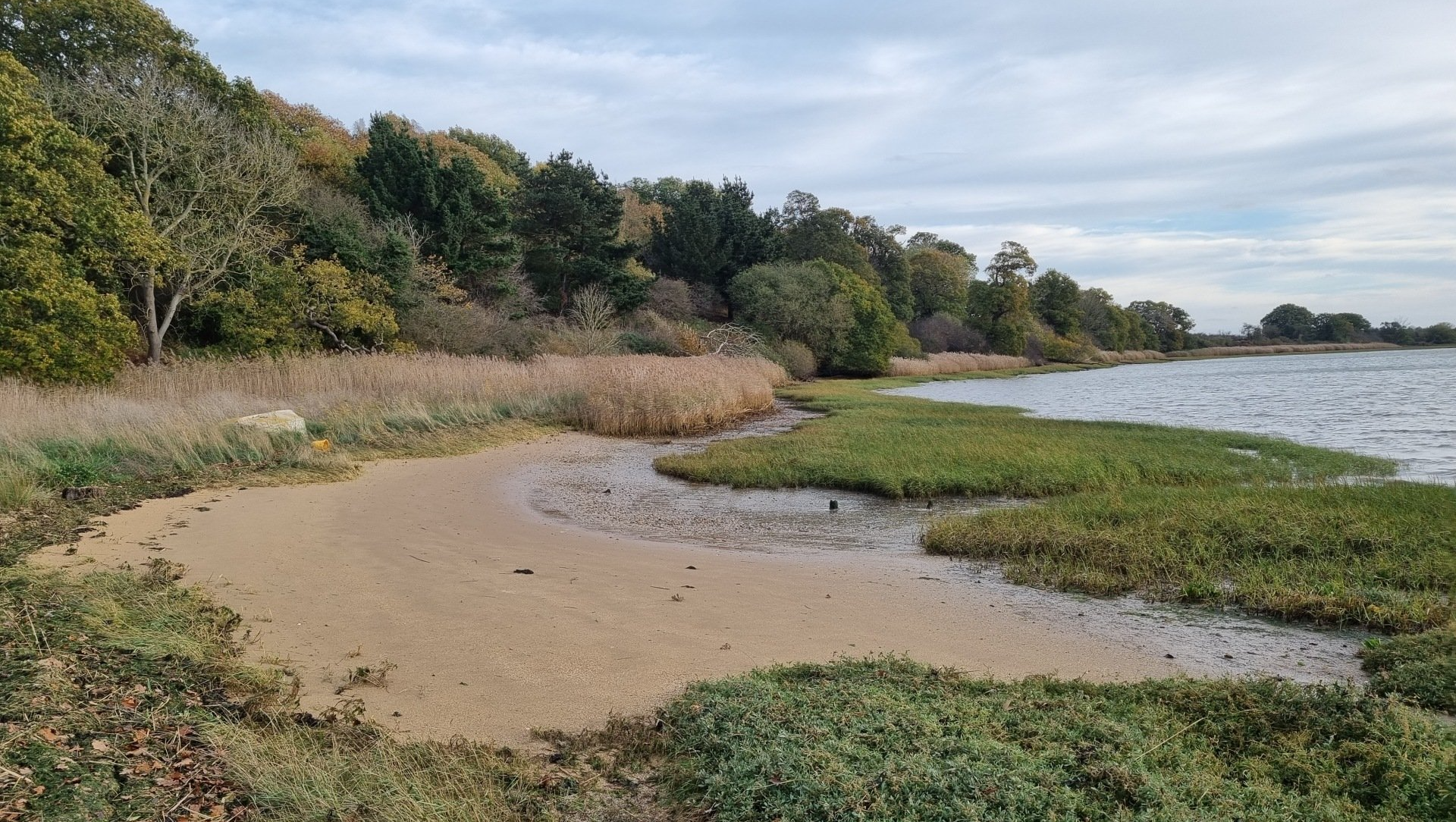ROAR - WildEast Pledgee (Smallholding)
Two weeks before the first lockdown WildEast Pledgee Daisy Greenwell moved her young family from Hackney into a cottage on a sprawling 45 acre plot on the banks of the River Deben.
Despite growing up in Suffolk - Daisy had spent the past decade living in nature depleted urban environments - first at university and then in London working as a journalist for The Times.
In this honest and inspiring account Daisy explains the transformative effects that nature recovery has had on the whole family.

It’s been almost three years now since I left inner city Hackney for rural Suffolk, with my husband and three children under-5. We went from a Victorian terrace where we could see through our front window into friend’s living rooms and the corner shop, to being a twenty minute walk to the nearest house, and five miles to a shop.
Where before there was never silence – the thudding of our neighbour’s reggae, toddlers wailing as they sailed past in their buggies – now there are only cockerels crowing, oystercatchers calling from the river, wind in the trees. It wouldn’t be for everyone, and I certainly wasn’t sure if it was for me.
Although I’d grown up on a farm in Suffolk, I spent the last twenty years in cities, first at university and then London, where I worked as a journalist at The Times. So the countryside was something we saw at weekends, and I was very disconnected from it. It’s hard not to be so when you’re living in an entirely man-made environment, nature only present as decoration. But something of my childhood was calling when we came across a cottage for sale in Suffolk with 45 acres of meadows and woodland on the banks of the river Deben.
In lots of ways it made no sense. Our roots were embedded in the city, my eldest was settling into her first year at primary school, my husband’s company was based a 10 minute cycle away, and my job required me at my desk each day. And yet it felt like fate, somehow, and so we threw everything and the kitchen sink at it, made peace with the idea of commuting, and uprooted our lives two weeks before the first lockdown.
Whenever work and homeschooling allowed, we’d be down by the river, cooking over a campfire, swimming and looking for crabs in the mud, waiting for the leaves on the oak trees whose branches dip into the river at high tide to finally burst their buds. It was exquisitely beautiful, and we couldn’t believe our luck.
I had no clue, though, how to look after our fields and woodland, what if anything they required of me. In the grand scheme of things 45 acres is tiny, but for us it felt like a leap into the unknown. It’s hard for a country person to understand just how alien this is to someone who has been living in the city, failing to keep alive even a pot plant, for years.
The whole language of it, the acronyms and euphemisms, seemed wilfully mystifying. We were in an SSSI and an AONB, we need to apply for BPS from the RPA and to think about GS2 Mid-Tier Options in a CS capital grant application, we should join a facilitation group and get a CPH number so we could put together a woodland management plan. But then again, they’d say, it’s all about to change with ELMs.
It made me feel quite thick, but also a bit cross – was it assumed that I knew what these things meant, or was it deliberately obstructive, like the language of the financial world is said to be, to scare people away and keep the power in the hands of those that do know?

A local shepherd bought his flock to graze the meadows, armed with reels of electric wire to bolster the patchy fencing. Our rough, hilly fields reminded him of his days farming up in Cumbria. It was bad land, very bad land, he assured us. The fields began to explode with nettles and thistles, the sheep to limp, and everyone, from the milkman to the old boy on his tractor, told us to start spraying it with glyphosate, for heaven’s sake! We balked at this, aware that our reluctance was regarded as foolishly sentimental.
I began to read books on farming and conservation, not just from a dutiful sense that I really should know more, but because I found that rural life suddenly fascinated me. I couldn’t believe that I had grown up here, with my eyes firmly shut, not realising the depth of debate and antagonism generated by the very practice of land management and food production. I started with Ask the Fellows Who Cut The Hay by George Ewart Evans, then moved on to James Rebanks English Pastoral, then Isabella Tree’s Wilding and George Monbiot’s Feral, Wildwood by Robert McFarlane, and Rebirding by Benedict McDonald.
I felt like my head was exploding with every page, the ideas inside making me gasp and want to text my friends, none of whom would have understood why hawthorn scrub, woodland management and mob grazing were getting me so worked up. Alongside this new knowledge, though, came grief. I knew about climate change, and that rainforests were burning, but I didn’t know that the spring we were experiencing was silent compared to that of our grandfathers. That there were 44 million less birds in Britain today than there were in 1966. That we were one of the most nature depleted countries in the world.

This dive into nature came to a head one summer weekend, and I found I could not stop weeping. Every parent has the hope that their children will lead lives as good, if not better than their own. My children, all of our children, face a bleak future unless radical change happens, and fast.
The one thing that whispered to me of hope was rewilding. There is something beautifully simple in the relinquishing of control to nature, in trusting that it will rebound with speed if only we let it. In Britain we seem to be uniquely obsessed with subduing it – even tiny, overcrowded Holland is a jungle by comparison. With our small patch of land, I realised, we have the opportunity to let it thrive uninhibited. The thought filled me with joy.
And so we began. To do nothing. To watch, and wait, and learn. First of all we didn’t spray it, we let the nettles and thistles run riot, and allowed the insects that live off them to thrive. We coppiced some old collapsing hazel thickets in the wood, to bring in light and a mosaic of habitats, and have planted ten black poplars – Britain’s rarest and endangered native tree –across the meadow. We ripped out the criss-cross of barbed wire fences in the fields, and planted half of our perimeter with native hedgerow and oak trees, begging manpower from wherever we could get it – friends with spades, family members, and AONB volunteers.
The Suffolk Wildlife Trust began to offer up expertise. If we were to bring back the wildflowers and orchids that had once dotted our meadows, recalled Dorothy Casey, their former head of conservation who had designated it a County Wildlife Site back in the 1990s, then we’d need cows. With their munching, trampling, seed dispersal and cowpatting, they’d start to make a dent in the thick sward of grass and nettles that had taken over.

We saved up for an eyewateringly expensive perimeter fence, which in time was thumped into the earth by a burly crew of men. A passionate Suffolk cowman I followed on Instagram, who posted regular portraits of his beloved herd of Riggit Galloways, ferried over five heifers and calves, plus one prizewinning bull. Having spent the winter in an 30sq ft yard, they exploded out of the trailer, before performing a ritualistic gallop around the meadows, into the wood, across the damp reedbeds, punctuating the crisp spring evening with hot-breathed moos.
I’ve been surprised to learn how strong their family bonds. These comparatively lucky mothers keep their babies for about eight months, and mourn loudly for days when they’re finally taken, haunting our sleep with their bellows. They’re also far from ‘bovine’ in character – they’re intelligent, adventurous beasts, traversing every inch of our land daily, and our flowerbeds the minute anyone forgets to shut the garden gate.
This autumn is their second year with us, and their lovely cowpats are studded with mushrooms – a good sign of their effect on the unseen mycological networks beneath the soil. In January we will begin work to rewild a canalised stream, filling it with fallen trees to create pools, like a beaver would. And our 23 acres of wood, which was used for rearing pheasants by the previous owners, needs a vigorous thinning throughout, to bring light and diversity into the dense canopy.

This week a marsh harrier swooped into the garden, and tore chunks out of something in its claws on the lawn. We’ve discovered there’s a barn owl living in a giant dead poplar stump in the field, a ‘siege’ of herons nesting on the Scots pines overlooking the river, and an electric blue kingfisher, so bright he looks lit from within, fishing from our sluice gate. Every evening hundreds of waders, ducks and geese fly in to feed on the mud flats beyond the river wall.
As a family our roots are now more deeply bedded into this sandy soil. I’m used to buying 8 packs of butter at a time, because there is no ‘popping to the shop’. The children now know an oak from a sweet chestnut, and a buzzard from an egret. I’ve even learnt my way round the acronyms I need to understand a discussion about, say, the future of farming post-Brexit (and also to relish every second).
My life has more depth and breadth now, I know what I care about and why – and I am so grateful to this patch of land for teaching me. It’s given me a north star that I never knew I was lacking.
I realise our efforts here aren’t going to change things on their own, but perhaps as one by one, friend to friend, person to person, we pass on the message and return as much space to nature as we can, we will start to regenerate Britain, and the planet, to its natural state of abundance.
WildEast Blog

Powered by LocaliQ
Follow Us
SIGN UP FOR NEWS & UPDATES
Newsletter Sign Up
Thank you for signing up to our newsletter.
Please try again later.
Privacy / Terms & Conditions / Sitemap
